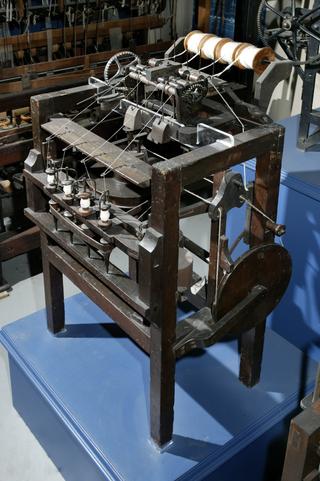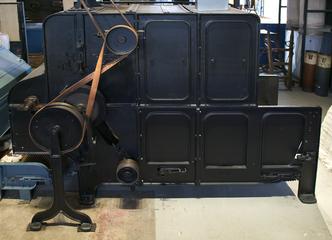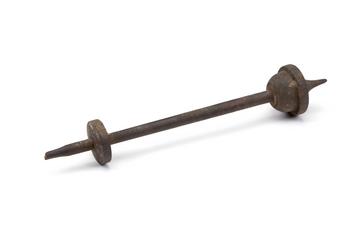
Martindale abrasion tester, made in around 1976 by James Heal in Halifax and used to test the wear rate of fabrics at the Shirley Institute in Manchester and then the British Textile Technology Group in Trafford Park, from 1976 to 2018.
The Martindale Abrasion Tester was first developed in 1942 to test the resilience of carbon-impregnated cloth, which was intended to protect against gas attacks, which were ultimately not a Second World War battlefield reality. It was developed by WIRA’s Dr J.G. Martindale with manufacturer James H. Heal, who made this model. Dr Martindale took inspiration from the movement of spinning machines to develop a machine which could rub cloth in circular and looped patterns called Lissajous figures. This movement ensured that the cloth was stretched and abraded in all directions. This process is known as the Martindale Test, which is recognised internationally as a measure of quality and is used by the British Standards Institution.
This model was used from 1976 to 2018 in Greater Manchester. The Shirley Institute, the Manchester based textiles research centre, used it during their research into new and experimental fabrics at their Didsbury premises, the Towers, and later at Trafford Park. Shirley merged with Leeds based WIRA (Wool Institute Research Association) in 1988 to form the British Textile Technology Group (BTTG). BTTG remained at Trafford Park and were using the Martindale to test the performance of specialised fabrics including personal protection equipment up until 2018.
Details
- Category:
- Textile Industry
- Object Number:
- 2019-236
- Materials:
- metal (unknown) and plastic (unidentified)
- Measurements:
-
overall: 200 mm x 940 mm x 540 mm, 65 kg
- type:
- abrasion tester




